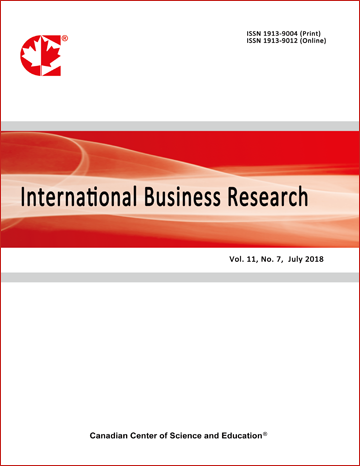Ownership Structure and Bank Risk-Taking: Empirical Evidence from the Middle East and North Africa
- Yosra Hammami
- Adel Boubaker
Abstract
This paper examines the impact of bank ownership structure on bank risk-taking. It used balance sheet information for around 72 commercial banks from 10 Middle East and North Africa (MENA) countries from 2000 to 2010. The main results emerged. After controlling for bank characteristics and country effects, we find that concentrated ownership structure is associated with an increase in bank risk-taking. Further, foreign-owned banks are more risked than Domestic-owned banks; however, Government-owned banks are more stable. For listed banks family ownership has positive impact on credit risk. So, family owners impose riskiest strategies when they hold higher stakes. For unlisted banks the effect of family and institutional ownership on risk is negative. Finally we conclude that the effect of owners identity on bank risk-taking depends on the fact that bank is listed or unlisted.- Full Text:
 PDF
PDF
- DOI:10.5539/ibr.v8n5p271
Journal Metrics
h-index (January 2024): 102
i10-index (January 2024): 947
h5-index (January 2024): N/A
h5-median(January 2024): N/A
( The data was calculated based on Google Scholar Citations. Click Here to Learn More. )
Index
- Academic Journals Database
- ACNP
- ANVUR (Italian National Agency for the Evaluation of Universities and Research Institutes)
- CNKI Scholar
- COPAC
- CrossRef
- EBSCOhost
- EconBiz
- ECONIS
- EconPapers
- Elektronische Zeitschriftenbibliothek (EZB)
- EuroPub Database
- Excellence in Research for Australia (ERA)
- Genamics JournalSeek
- Google Scholar
- Harvard Library
- IBZ Online
- IDEAS
- Infotrieve
- Kobson
- LOCKSS
- Mendeley
- MIAR
- Norwegian Centre for Research Data (NSD)
- PKP Open Archives Harvester
- Publons
- Qualis/CAPES
- RePEc
- ResearchGate
- ROAD
- Scilit
- SHERPA/RoMEO
- SocioRePEc
- Technische Informationsbibliothek (TIB)
- The Keepers Registry
- UCR Library
- Universe Digital Library
- ZBW-German National Library of Economics
- Zeitschriften Daten Bank (ZDB)
Contact
- Kevin DuranEditorial Assistant
- ibr@ccsenet.org
